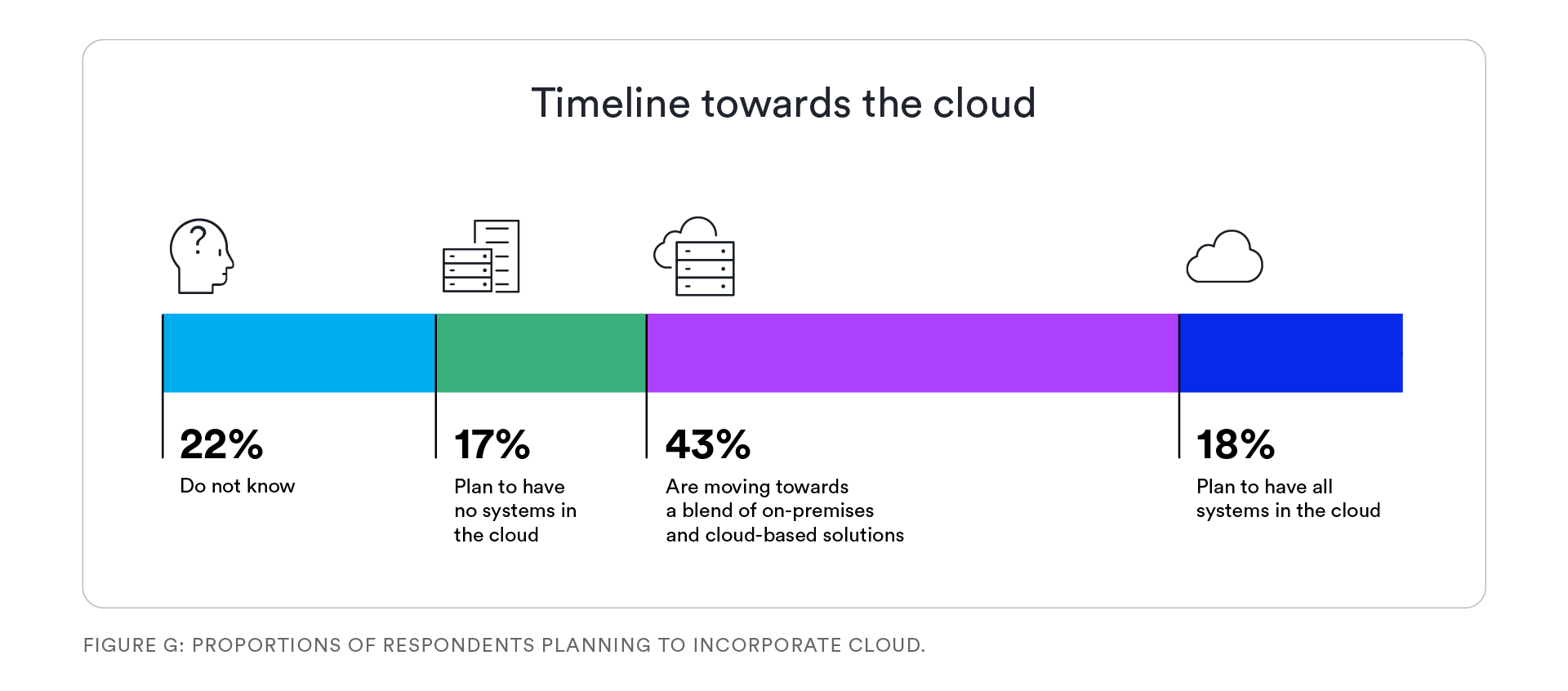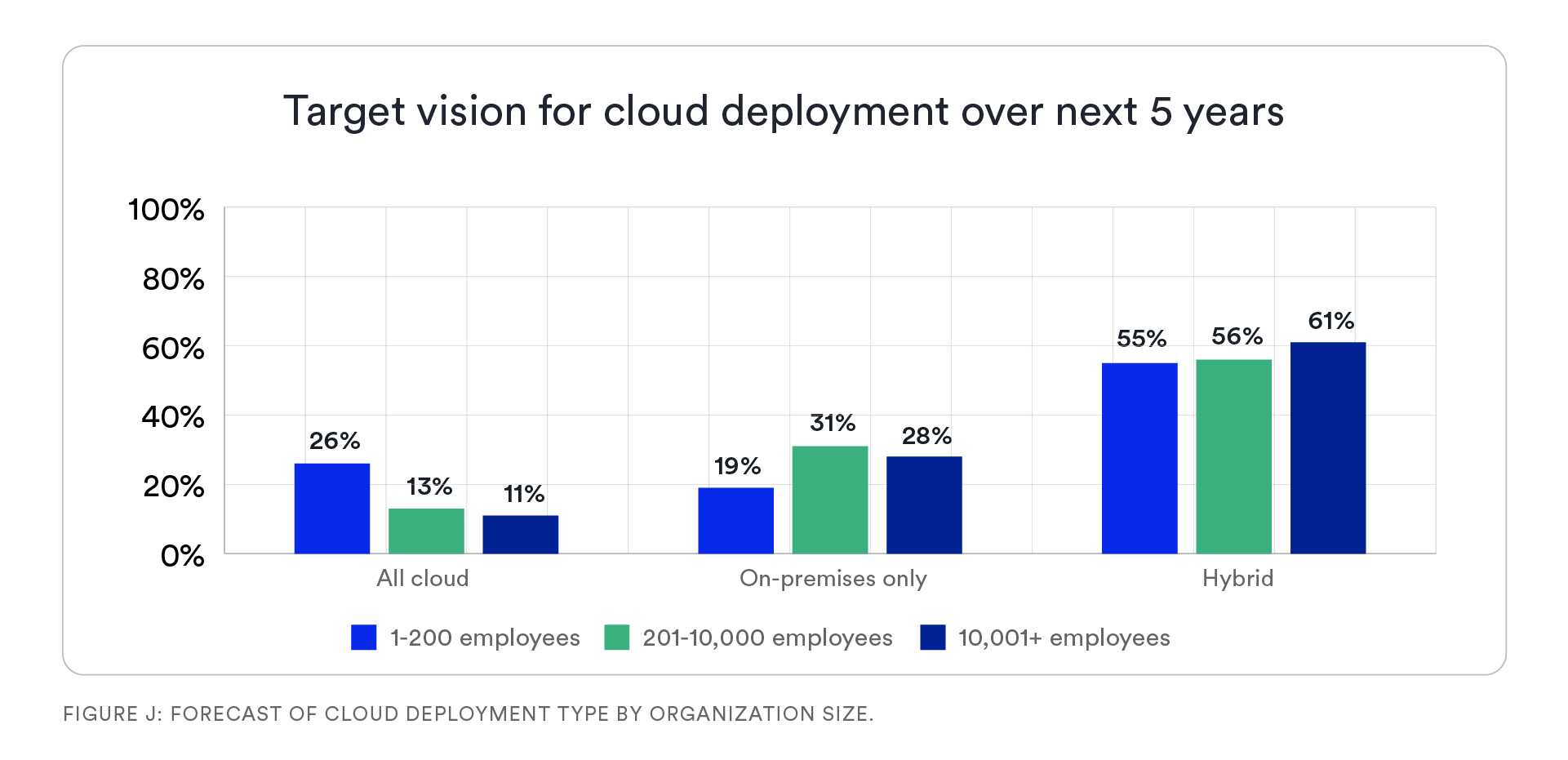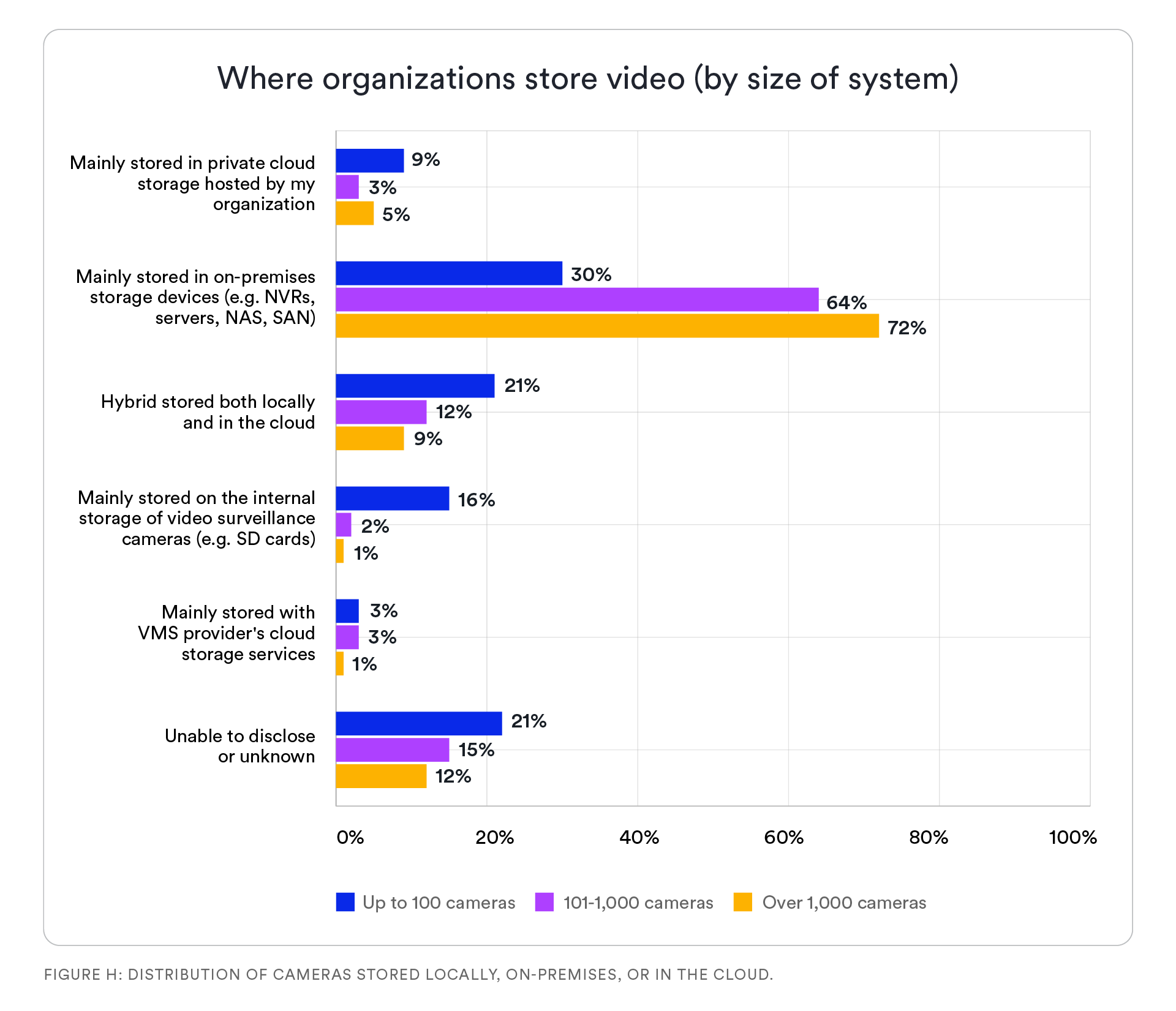Why the future of cloud is hybrid
Find out why organizations favor hybrid-cloud security with insights from our 2025 State of Physical Security Report.

For the fifth year in a row, our team conducted the State of Physical Security Survey. From this, we gathered insights about cloud adoption to gain a deep understanding of industry trends, challenges, and most importantly, what end users, channel partners, and consultants are planning.

Between 2022 and 2023, cloud adoption accelerated in the physical security industry. This year, survey results marked a slow down. Only 38% of end users reported that over a quarter of their physical security environment is cloud or hybrid-cloud in 2024, compared to 44% in 2023. Budgetary concerns, data loss, and overall control were the top reasons influencing cloud decisions.
Despite the slight deceleration, organizations appear to be more practical and strategic with their cloud deployments. They’re taking a more incremental approach, deploying cloud solutions when and where it suits their business. And when looking ahead, most organizations favor hybrid-cloud over full cloud deployments.

Why hybrid-cloud deployments are becoming popular
Hybrid architectures that blend on-premises and cloud-based solutions will suit most organizations best. Over the next five years, many companies envision a hybrid blend for their physical security deployments.
As they optimize their infrastructure investments, they recognize that a hybrid option will enable them to better manage storage costs and bandwidth efficiency.
This is supported by IT’s growing role in managing and deciding on physical security systems. This year’s survey results showed that 37% of IT respondents flagged cloud-based solutions as a priority, compared to 27% from physical security respondents.

“As they plan for the future, end users are looking for systems designed to grow with them, supporting their goals today and tomorrow. This includes flexible hybrid-cloud solutions that balance the benefits of cloud scalability with the control of on-premises infrastructure, ensuring optimal ROI and adaptability as their needs evolve.”
Christian Morin, VP of Product Engineering at Genetec
Channel partners and consultants also remain optimistic about future cloud adoption. 78% of channel partners said they expect an increase in new cloud systems in 2025. 66% of consultants confirmed they would specify hybrid-cloud deployments in the next five years.
A hybrid-cloud deployment provides greater agility and flexibility. You can increase or decrease cloud-based storage and processing as needed, remotely access video and data, and even federate on-premises systems into your cloud-based solution.
Hybrid-cloud security systems won't be the same for everyone. The beauty of a hybrid deployment is that your organization can optimize your physical security installation to best fit your unique needs. No matter how your security infrastructure evolves, having a hybrid-cloud deployment allows you to remain adaptable and take on innovative technology and integrations.

How cloud-managed appliances ease the transition to cloud
Did you know you can keep using existing on-premises infrastructure and edge devices? Many organizations are exploring cloud-managed appliances for this very reason.
Some have made significant past investments in edge cameras, IIoT devices, and other infrastructure hardware that may not be cloud compatible. And while they’re interested in cloud services, they aren’t ready or able to divest those assets.
If this sounds familiar, you can use cloud-managed appliances as a bridge to the cloud. This allows you to quickly modernize deployments while benefitting from your on-premises, edge, and cloud-based components.
These appliances are not only quick to deploy, but they also offer you centralized control of all your systems and hardware. From one location, you can easily manage security tasks and monitor system health. All updates are pushed to the appliance, which gives you access to continuous innovation and simplifies maintenance.
PRODUCT
Cloud adoption by organization size
Cloud-based video surveillance systems were initially adopted fastest by both small and larger organizations that have distributed sites and a small number of cameras—such as fast-food restaurants and retail bank chains.
Results from the 2024 survey indicated that this is changing. 41% of all respondents say they’ve slowed their cloud adoption due to costs for storage, data retention, and bandwidth. While smaller businesses are still showing interest in cloud, those with larger systems aren’t adopting cloud as quickly as before.

Today, there’s less hype and more practicality at play. Smaller organizations with less storage and bandwidth concerns can easily benefit from the convenience of cloud services, leading to continued interest.
Larger organizations are reviewing investment options and are looking for a more favorable balance between cloud adoption and related costs. In many ways, managing cloud expenses and cloud waste are becoming central to cloud considerations.
Is cloud adoption influencing OPEX budgets?
The 2024 survey also indicates that operational expenditure (OpEx) budgets were adjusted amid economic and political uncertainties. 44% of respondents reported an increase or steady OpEx budget in 2024, while 48% said that their capital expenditure (CapEx) budgets increased or remained flat. This fell short of projections from the 2023 survey, where over 50% of respondents anticipated steady or increased OpEx budgets in 2024.
These slight budget shifts align with the increased pragmatism that’s happening with cloud adoption. Yet as organizations plan their expenditures for 2025, 51% of end users responded that they’re going to focus on using existing technology like cybersecurity tools, data analysis, and improving departmental collaboration.
Access the full report findings to learn more about:
- How organizations are dealing with cybersecurity risks
- The challenges organizations worldwide are currently facing
- Which types of technology are being quickly embraced by the industry
Cloud or on-prem? Benefit from both
Did you know you can blend both cloud and on-premises solutions? A hybrid-cloud approach gives you the freedom to choose exactly how you want to set up each system and site.
On-premises physical security solutions can be beneficial in areas where you need a high level of control and customization. Tailor your systems for compliance requirements and industry-specific regulations. On-prem systems also minimize the risks of working with outside vendors by keeping data stored within your network and infrastructure.
Cloud and hybrid-cloud solutions can offer heightened cybersecurity, off-site storage capabilities, and minimized hardware maintenance. Your video, access control data, and sensor information are all stored and managed in the cloud. Having everything connected in the cloud also means you’ll have full visibility of your security environment, and the ability to manage tasks and take action from one place. Software as a service solutions can help offload maintenance, activate automatic updates, and quickly scale operations when needed.
Cloud-managed appliances help ease the transition to the cloud. If you have existing infrastructure and security systems that you want to keep but connect, these serve as a bridge to the cloud, while adding layers of flexibility, scalability, redundancy, and efficiency across your physical security deployment.
